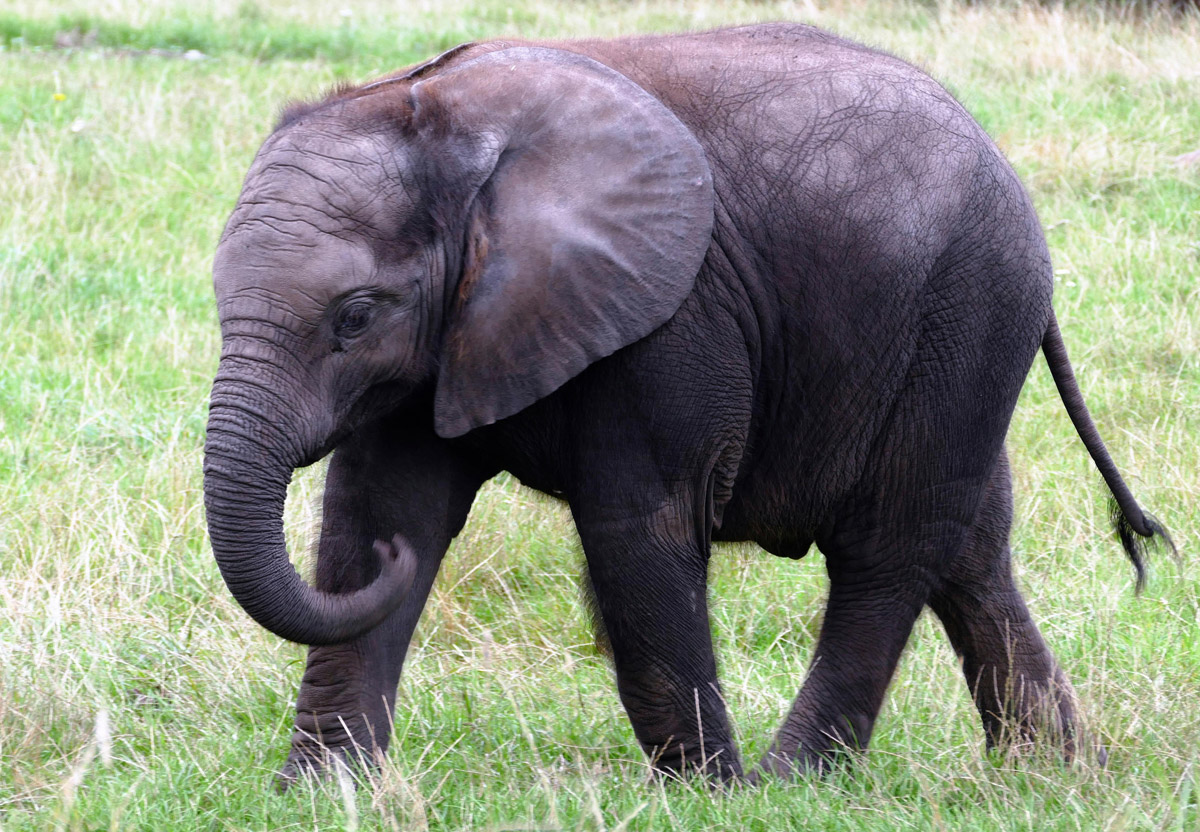
I was born and raised in San Francisco, so earthquake drills were a big part of growing up. Though I have no recollection of it, I was there for the 1989 Loma Prieta earthquake — aka the “World Series earthquake” — that reached a whopping 6.9 magnitude. My parents later informed me that I howled like a possessed creature of the damned for the duration. They made a point of stressing that I wasn’t crying or scared; just baying, like a jackal at the moon. Anyway, my parents kept me safe then (despite whatever dark arts I was communicating through sound), and that’s just what the African elephants did Monday morning at the San Diego Zoo Safari Park, when a 5.2-magnitude quake hit. On instinct, the herd of matriarchs immediately formed a protective huddle around their seven-year-old calves once the tremors began, facing outward to be alert for danger. Don’t worry, there’s a video.
A video shot of their enclosure at the park Monday morning shows the five African elephants standing around in the morning sun before the camera shakes and they run in different directions. Then the older elephants — Ndlula, Umngani, Khosi — scramble to encircle and shield the two 7-year-old calves Zuli and Mkhaya from any possible threats.
They remain huddled for several minutes as the older elephants look outward, appearing to be at the ready, their ears spread and flapping — even after the rocking stopped.
The quake was felt from San Diego to Los Angeles, 120 miles (193 kilometers) away. It sent boulders tumbling onto rural roads in San Diego County and knocked items off store shelves in the tiny mountain town of Julian near the epicenter but caused no injuries or major damage.
But it spooked the elephants.
Once in a circle, “they sort of freeze as they gather information about where the danger is,” said Mindy Albright, a curator of mammals at the San Diego Zoo Safari Park.
Elephants are highly intelligent and social animals that have the ability to feel sound through their feet. When they perceive a threat, they often bunch together in an “alert circle,” typically with the young clustered in the center and the adults facing outward to defend the group.
In the video, one of the calves can be seen running for refuge between the adults, a group of matriarchs that all helped raise her. But the other calf, the only male, remained on the edge of the circle, wanting to show his courage and independence, Albright said. Meanwhile, the female elephant, Khosi, a teenager who helped raise him along with his biological mother, Ndlula, repeatedly tapped him on the back with her trunk, and even on the face, as if patting him to say, “Things are OK,” and “Stay back in the circle.”
…About an hour later when an aftershock hit, they briefly huddled again and then dispersed once they determined everyone was safe.
Damn right this is what happens when the matriarchs are in charge! The response time is swift, the youngest and most vulnerable are safeguarded, and no one gets left behind. I don’t know why, but the part that’s really blowing my mind is where the protective pachyderms turn around in the circle, so butts are abutting. It’s amazing to me that they just know to do this! Speaking as someone who is always tasked with representing the office at building safety meetings, I’m mighty impressed. I can say from experience that humans, with all our supposed superior powers of speech, would not move so smoothly as those 3-ton mamas. And as for their fierce, innate drive to shield their young, need I remind you of Dumbo and his faithful Mother. If ever I feel the need for a deep sob, the “Baby Mine” scene gets me there in seconds. Let’s all strive to be more elephantine in our communities. Now if you’ll excuse me, I have a couple videos to watch on repeat.
Photos of elephants are stock photos from Future Kiid and Anthony on Pexels. Videos via Instagram